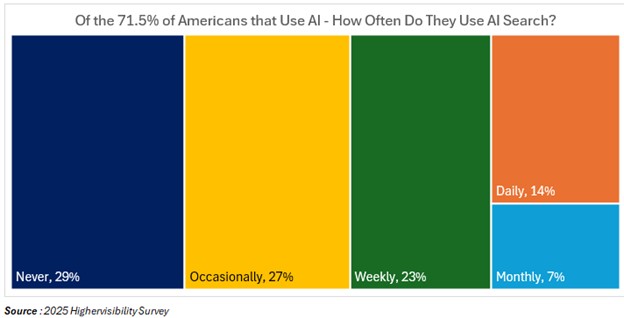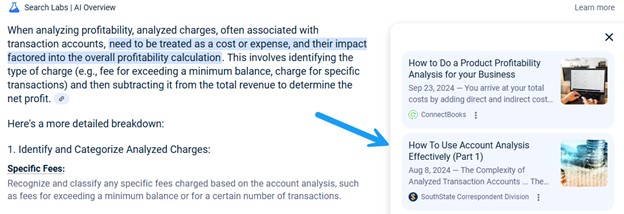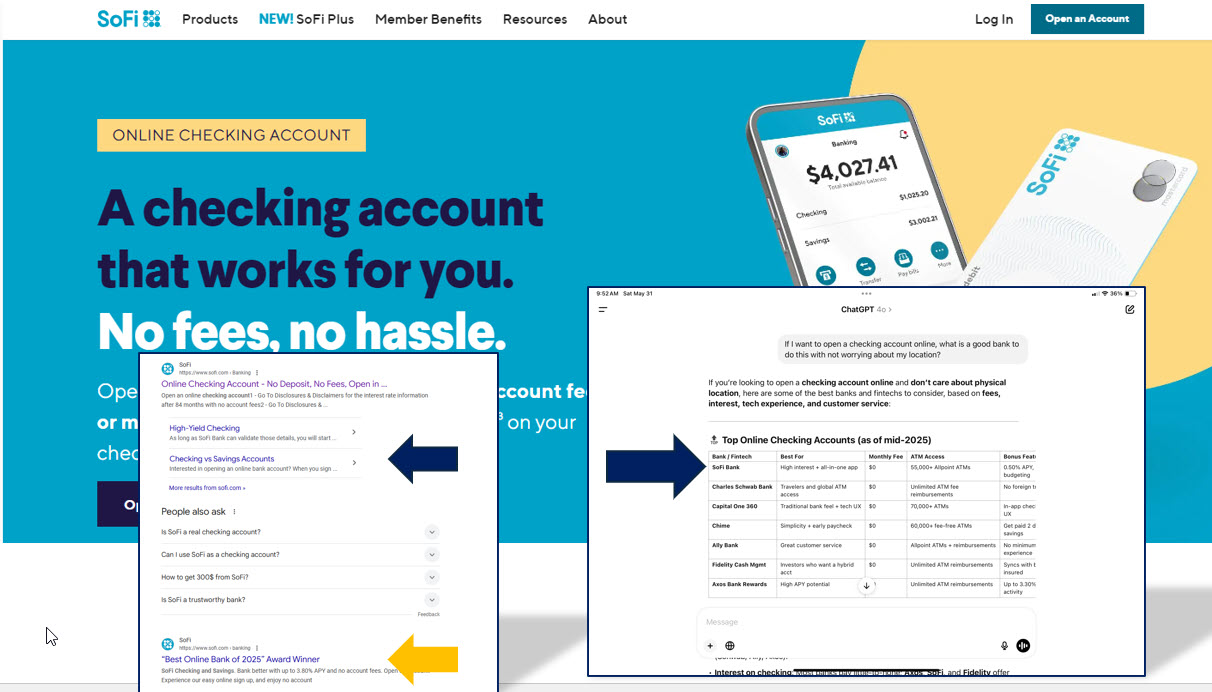Bank Executive’s Guide to Generative Engine Optimization
As you considering strategic initiatives for next year, one initiative to consider is to make the bank more AI friendly. The digital landscape is undergoing a seismic shift. Traditional Search Engine Optimization (SEO) is no longer sufficient in an era dominated by generative AI. For bank executives, understanding and implementing “Generative Engine Optimization” (GEO) is crucial to maintain visibility and competitiveness in 2026.
Understanding the Shift: From SEO to GEO
A bank’s website and landing page set is one of the most valuable properties a bank can own. It is responsible for more leads and sales funnel movement than any single branch, marketing campaign or marketing effort (or at least should be).
Prior to 2025, more than 90% of search was done via a search engine, mostly Google. That number is now dropping and a study (HERE) by marketing firm Highervisibility show that 71.5% of Americans now use tools like ChatGPT or Gemini to search for products, services and knowledge. 37% use generative AI weekly or more.

Historically, SEO focused on optimizing content to rank higher in search engine results pages (SERPs). This was done by looking at a site’s traffic, backlinks and authority ranking. However, with the advent of generative AI tools like ChatGPT, Claude, and Google’s Search Generative Experience (SGE), the focus has shifted. These tools provide synthesized answers, often reducing the need for users to click through to individual websites. As a result, appearing in AI-generated summaries has become paramount.
Why Generative Engine Optimization Matters for Banks
Banks have traditionally relied on SEO to attract potential customers searching for financial products and services. However, generative AI tools now curate and present information in a way that may bypass traditional search listings. If your bank’s offerings aren’t included in these AI-generated responses, you risk becoming invisible to a significant segment of your target audience.
The Emerging Art and Science of GEO
Optimizing for generative engine optimization is still in its nascent stages. Luckily, we have been experimenting and have some concrete ways for bank marketers to be found for generative AI search. Below are some key tactics.
- Enhance Content Quality and Relevance
Content still maters and organic search is cheap. Similar to SEO, GEO is still influenced by the quality of the content and the match with the search prompt. AI models prioritize content that is authoritative, relevant, and trustworthy. Blogs and posts that cover a variety of different topics help get your bank found (below). Ensure your website provides comprehensive information on financial products, services, and advice. Regularly update content to reflect current rates, regulations, and market trends.

One type of content that is becoming increasingly valuable for generative search results are comparisons. Content that directly compares your checking account with leading checking accounts, as an example, will boost the probability of a mention on a gen AI search.
- Implement Structured Data and Schema Markup
Structured data helps AI understand the context of your content. Utilize schema markup to highlight key information such as product details, reviews, and FAQs. Schema markup, also known as structured data markup, is the HTML code that provide context to search engine and AI. This increases the likelihood of your content being featured in AI-generated summaries.
Some banks that do a great job at generative search optimization include SoFi, Capital One, Schwab, Chase, Ally, and TD Bank.

- Optimize for Conversational Queries
Generative AI tools often respond to natural language questions. This has been a trend for SEO over the last five years, but it is now more important with gen AI searches. Tailor your content, particularly the headings and metadata, to answer common customer inquiries in a conversational tone. Bank marketers can use tools like Answertheppublic.com, Semrush or Google to look up how people search for bank solutions and then reverse engineer those keywords and phrases into your content. This aligns with how users interact with AI tools, increasing your content’s visibility.
- Leverage Customer Reviews, Testimonials and Reddit Comments
AI models consider user-generated content as a trust signal. Encourage satisfied customers to leave reviews and testimonials. Highlight these on your website to build credibility and enhance your content’s appeal to AI algorithms. In addition, in testing, we found most LLMs place a higher weight on Reddit and Discord conversations.
- Third Party Validation
Similar to customer testimonials, gen AI places a heavy emphasis on third-party website that rank bank products. In gen AI parlance, this is known as a “retrieval citation.” More emphasis should be placed on highlighting these types of rewards while working (and paying) these third-party sites to review your bank’s products.
- Training
OpenAI uses the free version of ChatGPT to help train future models. As such, using this channel to discuss your brand, and its attributes in comparison to other competitor products increases the probability that your bank brand and products will be cited.
- Tools
Several companies have launched platforms designed to aid in generative search optimization. Companies like Amplifying, Otterly, Profound, Scrunch, Bluefish AI, Brandrank and Evertune all can help increase gen AI search visibility.
Preparing for 2026 and Beyond
As generative AI continues to reshape how consumers access information, banks must adapt their digital strategies. Implementing generative search optimization practices ensures your institution remains at the forefront of customer engagement and acquisition. By enhancing content quality, utilizing structured data, and aligning with AI-driven search behaviors, your bank can thrive in the new digital era of generative engine optimization.

